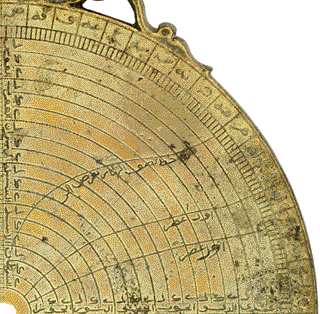
Lines of Faith
Prayer
Times
"And they were not
commanded but to serve Allah, being sincere to Him
in obedience, and being
upright, and to observe Prayer, and pay the
Zakat. And that is the religion
of the people of the right path." (98.5)
The public call to prayer is given at five specific times daily
from minarets or mosques by the muezzin (from azan - "call
to prayer"). Prayer times are determined by the position of the sun in the
sky. The Muslim day begins with the sunset prayer, Mahgrib, followed by
the evening prayer,
Isha, which begins at nightfall. The last of the prayers to be regulated
by the occurrence of twilight is the Fajr, beginning at daybreak. The
Zuhr (noon prayer) and the Asr (afternoon prayer) are given by
shadow-lengths. The Zuhr is given shortly after the sun has passed its highest
point, where shadow-length is at its shortest. The Asr is given when this
shadow-length has doubled. A stick or a gnomon could be used to check this time,
which varies with both location and the time of year.
The traditional
methods for identifying prayer times were based on folk astronomy, and often a
simple gnomon or sundial was used by the muezzins during the day. Islamic
scholars combined these traditions with more advanced knowledge of astronomy and
mathematics to construct instruments and tables for determining and displaying
prayer times. Although only used by a minority of Muslims, instruments such as
astrolabes and quadrants promoted both craftsmanship and scientific knowledge.